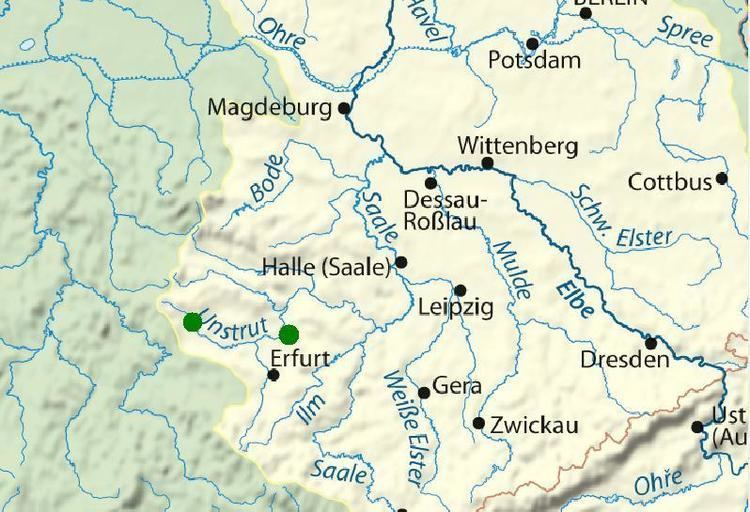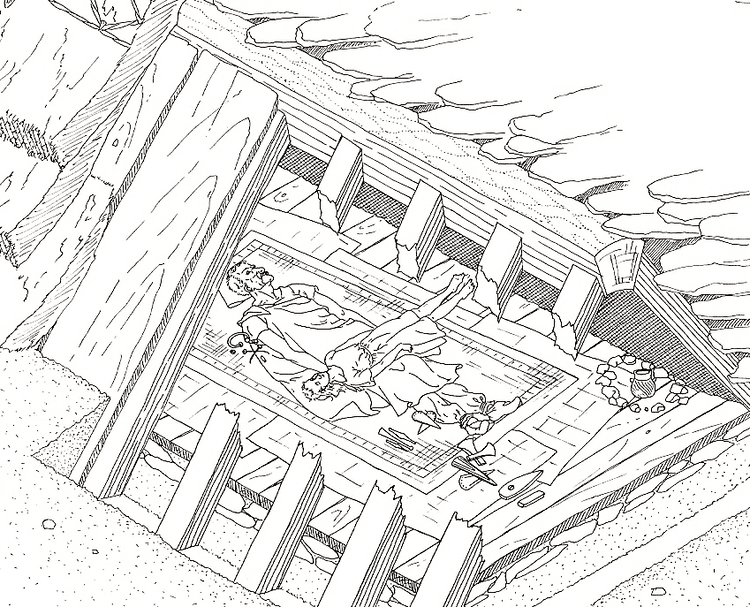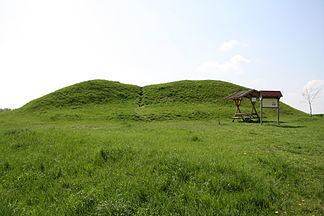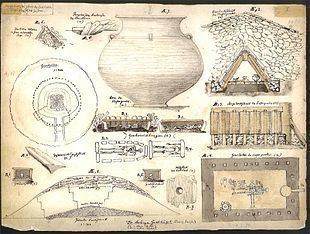 | ||
The Leubingen Tumulus is an early bronze age royal grave of the Leubingen culture, (which, after further finds at Auntjetitz became known as Auntjetitz or Unetice culture), dating to about 1940 BC, located near the hills of Kyffhäuser in the Leubingen district in the eastern German state of Thuringia. A burial chamber, the site was first unearthed in 1877 by art professor, archaeologist Friedrich Klopfleisch (1831–1898). This is the grave of a member of an elite individual based on the rich contents of the burial chamber as well as the presence of metal in the funerary gifts. During road construction in 2011 excavations on the site nearby have also revealed the remains of one of the largest buildings in prehistoric Germany, a longhouse 44 m x 10.50 m, or 470 square meters (5,057 square feet) of floor space, a trove of bronze objects, and a cemetery of 44 farmers.
Contents
- aftermovie himmelfahrt 16 beachclub leubingen
- Description
- Contents of the Grave
- Dating
- Surroundings
- References

aftermovie himmelfahrt 16 beachclub leubingen
Description

This grave consists of a Burial Chamber roughly the form of a hut/house of the time. It has a saddle-shaped roof made out of heavy oak beams covered in stones with an earthen burial mound on top of the structure. The mound is 7 metres (23 ft) high and contains a burial chamber of 3.90 by 2.10 metres (12.8 by 6.9 ft) with a maximum height of 1.70 metres (5.6 ft).
Contents of the Grave

In a central position lay the body of a man about 50 years old, draped over his loins at an angle of ca. 40° lies the body of a young woman who was seemingly killed right after the death of the man.

Dating

Dendrochronologic testing has placed the grave at circa 1940 BC. This type of burial is typical for elite graves in the Early Bronze Age in Western Europe.
Surroundings

Between the 8th and 11th century AD, the local (nowadays Slavic) community placed a graveyard (cemetery) of about 70 graves in and around this manmade hill.
